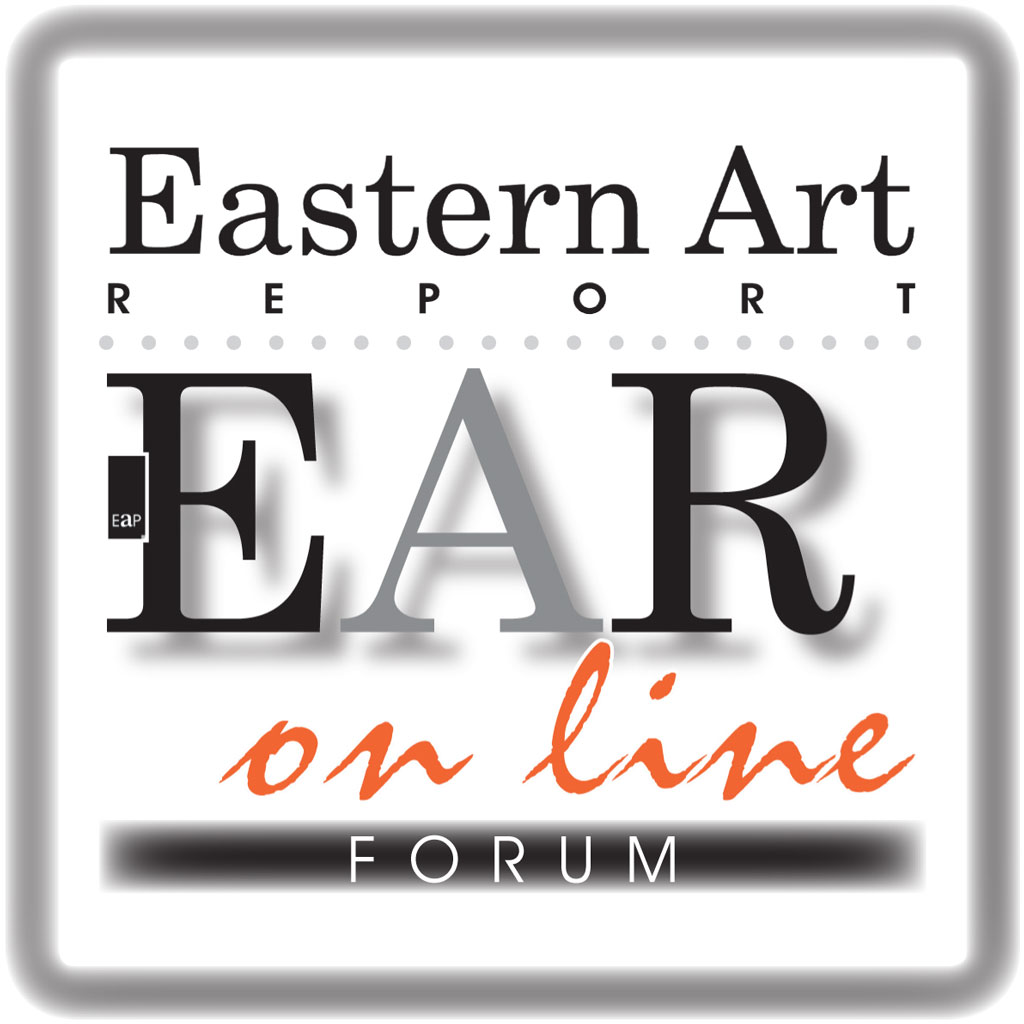New work by Kwang Young Chun is the highlight of a triple event centred on London’s Bernard Jacobson Gallery even as some of the happenings are taking place thousands of miles away.

Kwang Young Chun 2013, Aggregation 13-DE060, mixed media with Korean Mulberry paper, 163 x 131 cms (64 1/8 x 51 5/8 ins)
The gallery exhibition (12 March – 17 April 2014) marks the artist’s 70th birthday and the publication in New York of a monograph, Mulberry Mindscapes, that references Chun’s innovative use of hanji mulberry paper and natural dyes indigenous to Korea and elsewhere.
The new work in the gallery’s exhibition is from Chun’s Aggregation series and brings together more than 10 large-scale works.
Chun’s work is collected by museums worldwide, including the V&A, which recently acquired a piece from the Aggregation series. New Work features Chun’s most recent and distinctive large, wall-hung works covered in small, triangular forms brought together by a wave of colour. Each triangle is made up of varied sized pieces of polystyrene wrapped in mulberry paper (hanji) and tied neatly with lengths of string. Each triangle is individually coloured with natural dyes. Collectively the differing sized triangles create surfaces that resemble those found in the natural world, such as the bark of a tree or a geological formation, often cratered and scarred. The use of varying tones of a single colour in each work brings an overall mood to the piece.
The essence of Kwang Young Chun’s work is his use of Korean mulberry paper. Sourced from old books and magazines, the paper has Chinese and Korean characters still visible under the dye. Through his transformation of a material familiar to every Korean household, he has developed his own medium to represent the spirit of Korea. For Chun, each work has become a window to reflect on the history of human life and on-going conflicts of modern man, nature and the drive of materialism, endless competition, conflicts and destruction. This exhibition, the first in the UK for eight years, gives an insight into the artist’s desire to bring balance and order to life and will offer the viewer a piece of Chun’s unique portrayal of calm.
Born in Hongcheon County, South Korea in 1944, Kwang Young Chun trained and worked in America from 1965 to 1979. As a student at the Philadelphia College of Art, Kwang Young Chun was influenced by the liberation enjoyed by Abstract Expressionism. This new found liberty was in stark contrast to his experience of traditional training back in Korea which he viewed as over regulating and a form of creative censorship. Chun built a successful career within the Abstract Expressionist movement but was constantly at odds with the feeling that this was a borrowed identity. When in 1995 a childhood memory returned to him of a visit to a doctor’s surgery with ceilings hung with packages of medicine wrapped in mulberry paper, he began to use this traditional Korean material in his work. His sense of being able to communicate an individual voice, true to his South Korean origins, marked a crucial moment in Chun’s career.
Kwang Young Chun: Mulberry Mindscapes is published 15 April 2014 by Rizzoli, New York. The monograph covers his career from early abstract paintings to the more recent Aggregation series. Written by the artist himself with Professor John C. Welchman and leading art critic Carter Ratcliff, the book explore Chun’s work and use of traditional materials and organic dyes, and reflects on how these meticulous processes have been recognised around the world. The book catalogues those works found in public collections including the United Nations and Rockefeller Foundation, the National Gallery of Australia, Seoul Museum of Art and Museum Kunstwerk, Eberdingen-Nussdorf, Germany.
After receiving a Bachelor of Fine Art from Hongik University in Korea, Chun travelled to America where he completed a Masters in Fine Art at the Philadelphia College of Art. He continued to practice as an artist in the US until the late 1970s when he returned to South Korea. He started titling his work with the prefix Aggregation in 1973, acknowledging their nature as compositions comprised of many similar yet distinct parts. In 1995 he made his first mulberry paper assemblage and has since grown a reputation for his works using polystyrene triangles wrapped with naturally dyed and text covered papers.
Recent solo exhibitions include Art Plural Gallery,Singapore, Museum of Seoul National University, Seoul, (2013); Hasted Kraeutler Gallery, New York, Towson University Asian Art Center, Maryland, Lynchburg College Daura Gallery, Virginia (2012); Knoxville Museum of Art, Tennessee, Conny Dietzschold Gallery, Sydney (2011); Mori Arts Center, Tokyo, Japan, University of Wyoming Art Museum, Laramie, Singapore Tyler Print Institute, Singapore, The Columns Gallery, Seoul (2009); The Aldrich Contemporary Art Museum, Ridgefield, Robert Miller Gallery, New York (2008). Important group-show venues have included the Aldrich Contemporary Art Museum, Ridgefield, and CODA Apeldoorn/Museum Rijswijk (both 2007).
Artist Talk: New Work and Mulberry Mindscapes: Kwang Young Chun. Artworkers Guild, Tickets GBP 5, Friday 14 March. Chun will be offering an insight into his development of the Aggregation series and the messages he portrays through his acclaimed and unique style.
Kwang Young Chun: New Work, Bernard Jacobson Gallery, 6 Cork Street, London, W1S 3NX. T +44 (0)20 7734 3431




